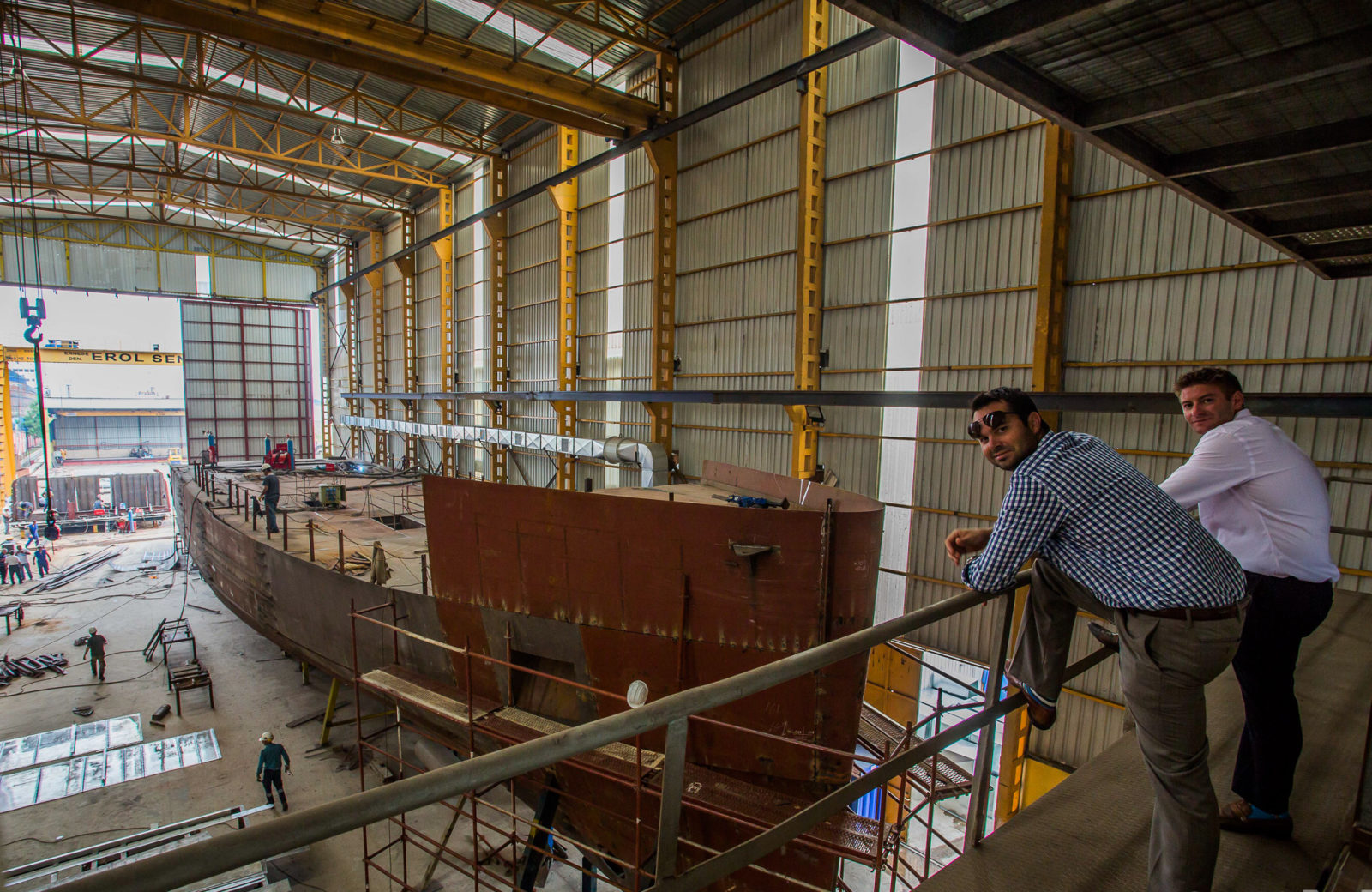Blog | A Guide to New Yacht Construction: Q&A with Nicholas Scherb



Nicholas Scherb grew up boating, so it wasn’t long before his career as a financial analyst for IBM brought him back to the water, where he quickly rose from deckhand to captain. Since he and Mike Carlson launched 26 North Yachts in 2011, Nick has visited more than 50 shipyards across the world and developed an extremely well-rounded understanding of yachts, from design and construction to operation and maintenance. Here are some of his insights into the process of building a custom yacht.
“Our company can work with any builder, but we like to visit the manufacturers’ shipyard and get very hands-on with every project. Most brokers don’t do that. Our focus is really on connecting the buyer’s needs and vision with the right shipyard.”
“Going directly to a builder is an option, but as a broker, I know about yacht-makers all over the world. Rather than focusing on the one builder, you have in mind, you can bring me your ideas and I’ll connect you with the right builder, which might be someone you’ve never considered – or even heard of. I’ve been to some really small, dirty yards that produce incredible results. Plus, not every builder is right for every project. As your broker, I’m able to protect your interests. We handpick your team, keep the process running smoothly and ensure that your vessel is being built correctly.”
“There’s no cut-and-dry answer to that. It depends on the boat’s design, materials, components, who’s building it, where it’s being built, and other factors. The typical metric we use is a cost-per-gross ton, but shipyards don’t love that because the value is so specific to each vessel.”
“The obvious upside is that you get exactly what you want. However, you pay a premium and you must wait for the boat to be built. The fastest semi-custom boats take about 18-24 months, but you’ll be waiting 3-4 years for a custom yacht over 50 meters. This usually isn’t the right path for first-time buyers. Typical new-build yacht clients have already owned a few boats, know exactly what they want, and are willing to wait for their dream vessel.”
“First, analyze your Ws: Who are the passengers? What do you want to do with it? Where do you want to go? When do you want to use the boat? Then you need to think about how much you want to spend and how long you’re willing to wait. Answering these questions will help you hone in on the length, number of staterooms, equipment, style, water toys, and other considerations.”
“That’s where 26 North Yachts brings a lot of value. I know the shipyards inside and out, and we act as a general contractors, helping clients put together a dream team. Not all boatyards are right for every build. I was blown away when I visited Horizon Yachts in Taiwan. It’s an incredible operation. Over in the Netherlands, you have yards like Hakvoort, which is a small family business that essentially supports an entire town. Then you go to Lürssen and it’s a massive operation that builds half the German navy. Choosing your shipyard is probably the most important decision, and part of that decision is emotional. You must feel a sense of trust and confidence.”
“I am very honest with all of my clients. The average length of ownership for a yacht is three years, so you must consider its resale value. An odd color choice on the hull can be painted over by the next owner, but the number of staterooms, stabilization systems, and other fixed features will impact its resale value, so I tell my clients to plan ahead. If I think they’re making a bad decision that will hurt the boat’s resale value, I tell them.”
“The biggest problem? Change orders. They directly impact costs and delivery time. I also sometimes see shipyards start building without a finalized engineering and electrical plan, which can cause issues later in the process.”
“I’ll tell you a funny story. We visited a shipyard in Turkey to check in on a client’s project and it was both the middle of Ramadan and the middle of the World Cup. When we arrived at the yard after sundown, the crew had broken their fast and began work. The atmosphere was wild. It’s one of those moments that could only happen in a very specific time and place, and the energy in the yard was unforgettable. It’s like everyone was talking, eating, cheering, and working all at the same time.”
“The biggest trend is eco-friendly yachting. This industry can be slow – even resistant – to change, but it’s unavoidable. Builders like Trinity are exploring hydrogen power while Feadship is already building battery-powered yachts. Then you have zero-waste systems, water purification, emissions scrubbers, and more, all with the goal of reducing the environmental impact yachting creates. We’re now even ditching teak and exotic woods in favor of highly durable synthetics because they’re more sustainable. The next big trend I see is a rise in watersports and activity-driven yachting. My younger clients are especially into the healthy, active lifestyle, so it’s all about the toys – slides, jet skis, etc., and all of these things take up space on board. I now see designs for separate vessels just for toys. Innovations tend to take root either in the smaller boats, where they’re borrowing ideas from RVing, or superyachts, where there’s a lot more budget for experimentation. Then we’ll see those innovations trickle down to the middle of the market.”